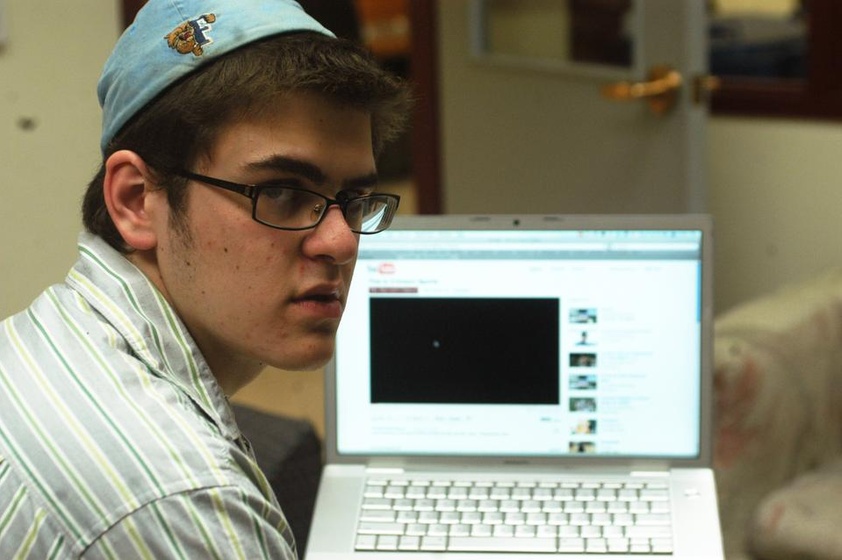“Okay, let’s go around the room and everyone say their name, year, and one interesting fact about himself.”
Shit.
I always hated this icebreaker, even more than the personal trait scavenger hunts or the two-truths-and-a-lie game (I always told three lies; the Neil Klatskin Day Camp staff of Tenafly, N.J. thinks that I was a series regular on “ZOOM” in 1999).
And then I got to Harvard, and this game became the worst. I started learning that people had all these incredibly interesting and life-defining accomplishments: spelling bee champion, Broadway starlet, vaccine inventor, all just in my entryway. When the question was thrown back at me, not much came to mind, except...
I produced YouTube videos.
They weren’t good or popular YouTube videos, like the psychology experiment (I didn’t even see the gorilla), lip-syncing midgets, or an “Arrested Development” chicken dance compilation—the functional definition of a good YouTube video. They were sketches and shorts I did with friends or for my high school administration that piqued my interest enough to study film at a university.
And now here I am at college, and I, along with a relatively small number of individuals, decided to dedicate 6/7 of my week to writing, directing, editing, and producing YouTube videos. I’ve pledged every ounce of free time I have to an art form that has a 15-minute time limit, allows you to choose your video quality, and regularly puts advertisements for real-life movies ahead of my own. Day after day, I am bested by children getting punched in the face, news anchors cursing on air, and reality TV stars...also getting punched in the face.
Sure, YouTube has its downsides. The interface is so interactive that it’s hard to retain people. You can get someone to click on your link, but the drop-off is quick when there’s so much content in one place. No matter how many hours I put into producing something, I always lose to boobs. If a video has boobs as its screenshot and it’s in the related video section, it’s getting clicked. You can’t beat boobs on YouTube. And of course, there are the comments. As hurtful and profane as they may be, YouTube comments might be some of the funniest, bluntest critiques you’ll ever read. The lurkers who comment on YouTube videos can get pretty real. “Those are eight minutes of my life that I will never have back.” Too real, sometimes.
But YouTube is also a great vehicle for aspiring filmmakers. It’s accessible—clicking on YouTube links has become second nature. There’s anonymity in the hyperlink that can lead to someone sticking around who otherwise might not have clicked. There’s an audience of almost 500 million people who may just stumble upon your work. Great content is also mixed in with mind-numbing sneezing panda videos. To anyone who says otherwise, I argue that some of the best movies ever made are on YouTube. You just need to watch them in 13 or 14 parts.
I admit, video-streaming websites aren’t as glamorous as, say, a 70-year-old theater or an attractively designed page layout, but when it comes to distributing student-produced content, they do the trick. They’re the simplest means of putting stuff up on the web hassle-free and payment-free. But there’s still a cost—that inevitable association with memes and rick-rolls and a general aura of, well, unserious content.
That sucks. Student filmmaking is one of the most collaborative processes I’ve participated in. Especially at Harvard, where there’s only so many people with the knowledge to share or the enthusiasm for the process. Every actor, writer, and theater director will tell you they have an interest in producing video content, but comparatively we’re a small bunch. That’s because filmmaking is tough.
And nothing better parallels the difficulties of filmmaking than the restrictions presented by YouTube: time constraints, increasingly and unfortunately variable quality of content, and distractions everywhere to prevent a project from being finished. And of course, there is that perpetual, ongoing association with unseriousness. It’s hard to shake. I’ve worked with some fantastic writers, cinematographers, directors, composers and actors whose efforts are too easily lost in the grimy, brainless channels of a website that so perfectly embodies our culture.
You can claim YouTube is just a website for funny gags and attempts at fame (not to say that that would be so bad), but it’s also a great place to get started. And there’s some good stuff out there.
But if I’m producing YouTube videos professionally in five years, here’s written permission to punch me in the face.
—Sean B. Goller ’12 is a Visual and Environmental Studies concentrator in Pforzheimer House. He wants eight minutes of your life back.


